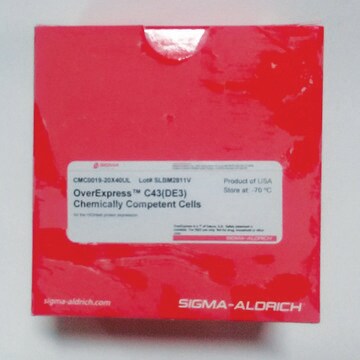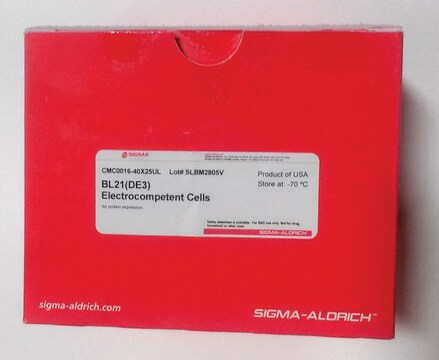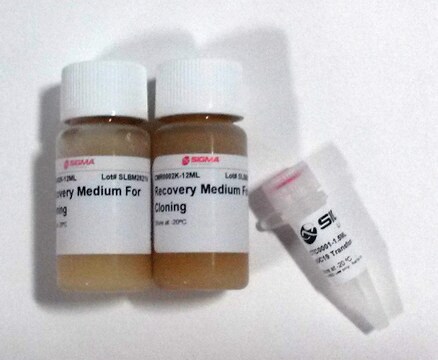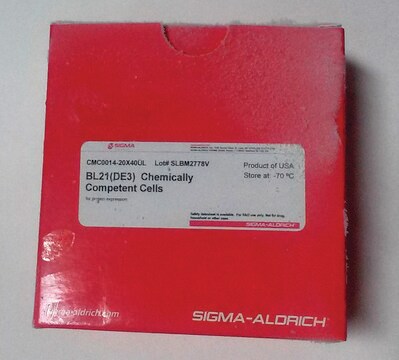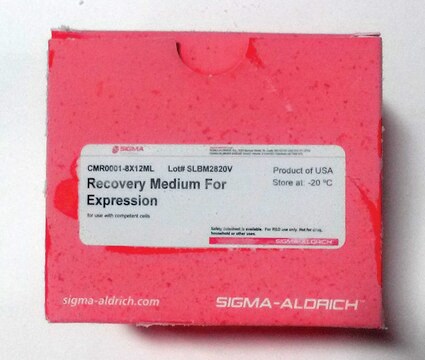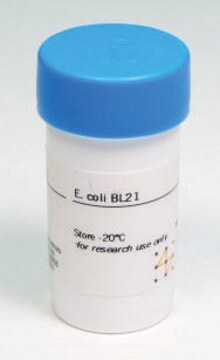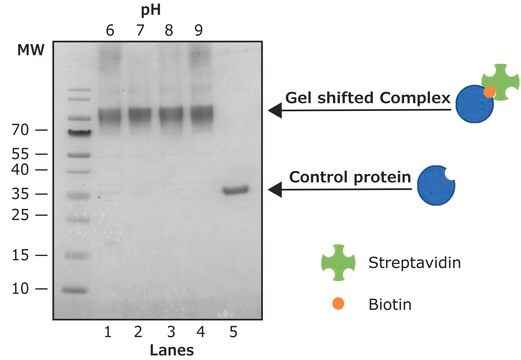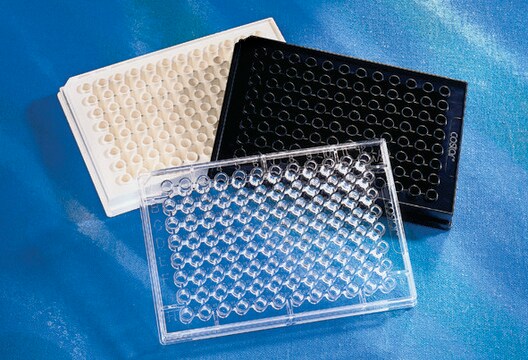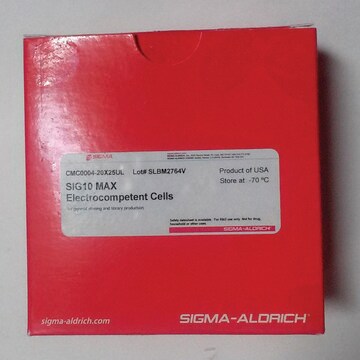CMC0017
OverExpress™ C41(DE3) Chemically Competent Cells
Escherichia coli, rod shaped
Sinónimos:
C41 strain
About This Item
Productos recomendados
Nombre del producto
OverExpress™ C41(DE3) Chemically Competent Cells, for the highest protein expression
biological source
Escherichia coli
grade
for molecular biology
growth mode
adherent or suspension
morphology
rod shaped
technique(s)
microbiological culture: suitable
cell transformation
competent cell type: chemically competent
transformation efficiency: ≥1 x 106 cfu/μg
shipped in
dry ice
storage temp.
−70°C
Categorías relacionadas
General description
Genotype
F – ompT hsdSB (rB- mB-) gal dcm (DE3)
Application
Features and Benefits
- Express genes cloned into any T7 vector with these BL21(DE3) derivatives
- Effective in expressing toxic & membrane proteins
- Cited in over 350 research articles
Components
- OverExpress C41(DE3) chemically competent cells
- pUC 19 transformation control DNA
- recovery medium for expression
Legal Information
related product
Storage Class
10 - Combustible liquids
Elija entre una de las versiones más recientes:
¿Ya tiene este producto?
Encuentre la documentación para los productos que ha comprado recientemente en la Biblioteca de documentos.
Protocolos
Protocol for OverExpress™ Chemically Competent Cells. Product Numbers: CMC0017, CMC0018, CMC0019, CMC0020, CMC0023, CMC0024
Nuestro equipo de científicos tiene experiencia en todas las áreas de investigación: Ciencias de la vida, Ciencia de los materiales, Síntesis química, Cromatografía, Analítica y muchas otras.
Póngase en contacto con el Servicio técnico